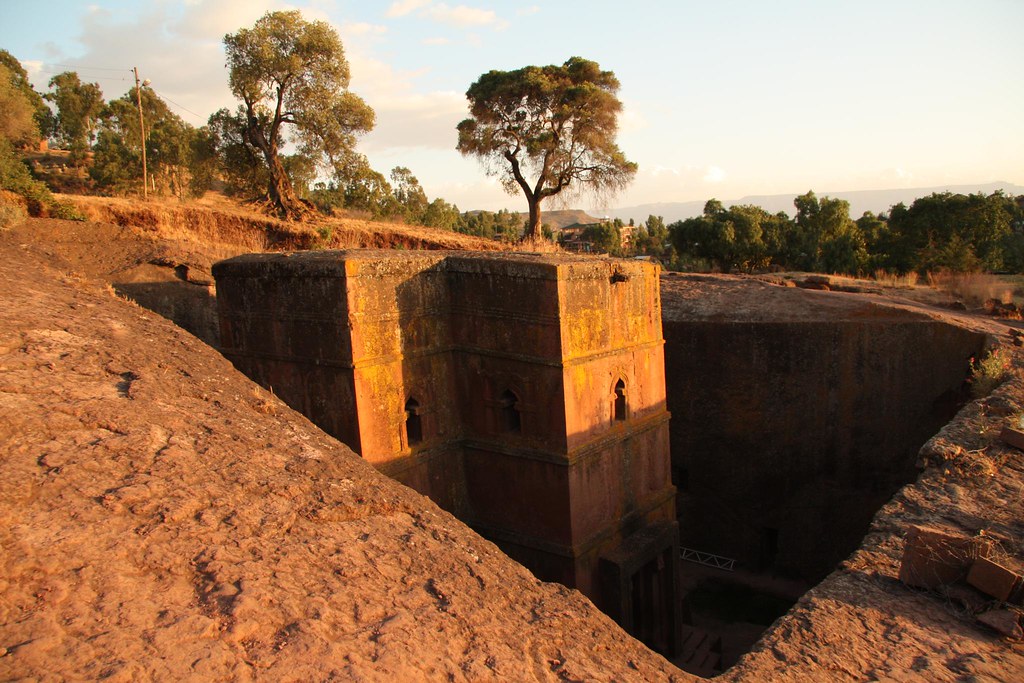Architectural styles sometimes make it onto the pages of Twelve Mile Circle. Remember Pueblo Deco and Egyptian Revival? Then I stumbled across another noteworthy example. I considered structures I’d wondered about before, carved directly from their stony landscapes. Nonetheless, I didn’t realize at the time that it had a name, Rock Cut Architecture.
This style came to prominence during ancient times although it continued to exist even during the present in isolated instances. Many ancient cultures from all parts of the world carved buildings from stone during its heyday. I picked a few favorites to explore further for this and a follow-on article.
It seems like I’ve done a lot of multi-part articles lately. I’m not so sure that’s become truly a “thing” on 12MC. Maybe it’s more of a reflection of topics with an overabundance of material lately.
Petra, Jordan

Petra was the classic example and probably the place that most people knew about (map). It certainly made appearances in popular culture. These including movies like Indiana Jones and the Last Crusade and Transformers: Revenge of the Fallen. Those were rather trite references though. The real deal was much more impressive.
Classic structures within the complex including Al Deir (“The Monastery”) and Al Khazneh (“The Treasury”) dating back to about the time of Christ. Petra, then known as Raqmu, was a trading center for a civilization of Arabs called the Nabataeans. Camel caravans traveled across deserts from faraway places to this important crossroads. The people of the Nabataean kingdom made their city there, “half-built, half-carved into the rock” and “surrounded by mountains riddled with passages and gorges.”
That was a mighty fine place until the Roman emperor Trajan conquered Nabataea in the first century. Eventually it became lost to the Western world until being “rediscovered” in the Nineteenth Century. Now it’s the most important tourist site in Jordan.
Lalibela, Ethiopia

It was actually Lalibela that brought this topic to my mind as I took a walk the other day (map). I used to go to an Ethiopian restaurant called Lalibela and I wondered whatever happened to it. So that took me down a mental tangent to the holy city of the same name.
Bedrock plains formed a canvas for Lalibela, made of an unusual and highly porous form of limestone called tufa. “The metabolism of algae, bacteria and mosses is important for tufa formation due to consumption of CO2 (causing CaCO3 [calcium carbonate] supersaturation).“
Unlike many other places with Rock Cut Architecture, structures at Lalibela such as the Church of St. George (Biete Ghiorgis) weren’t cut from the side of mountains, they were cut directly from the ground. Structures here dated to the Middle Ages.
“In a mountainous region in the heart of Ethiopia, some 645 km from Addis Ababa, eleven medieval monolithic churches were carved out of rock. Their building is attributed to King Lalibela who set out to construct in the 12th century a ‘New Jerusalem’, after Muslim conquests halted Christian pilgrimages to the holy Land.”
It remained one of the holiest sites in Ethiopia, still a gathering point for Ethiopian Orthodox Christians even today.
Abu Simbel, Egypt

The temples at Abu Simbel went way back to the reign of Pharaoh Ramesses II who commissioned these structures circa 1250 BC (map). He meant to send a message, a symbol of his power at the far southern fringes of his empire. These magnificent structures carved into cliffs along the Nile River confronted all who passed. It displayed a grandeur that no other civilization could replicate at the time.
Abu Simbel continued to impress in modern times. The site disappeared beneath desert sands for centuries, completely forgotten until about two hundred years ago. More recently, in the 1960’s, Egypt built the Aswan Dam and created Lake Nassar. This offered many benefits to a desert nation including flood control on the fickle Nile, water for irrigation, and abundant hydroelectric power. It also would have drowned Abu Simbel below the surface of the lake. Instead, the Egyptian government lovingly moved the structures uphill. They reconstructed them piece-by-piece into artificial hillsides specially constructed for this purpose.
Göreme, Turkey

Structures at Göreme arose in a much more haphazard fashion (map). The local landscape contained geological features known as hoodoos or “fairy chimneys” caused by erosion. People first moved into the area prior to 1000 BC, possibly for safety. This area of Turkey traded hands frequently as empires rose and fell. The inhospitable hoodoo formations repelled outsiders while offering attractive formations for local inhabitants to dig into and build their homes, businesses and places of worship. The town continues to have a population of about 2,000 residents.

Leave a Reply